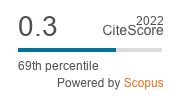- Home »
- Issues »
- 24/2 – Fall 2019 »
- Articles »
David I. Dubrovsky and Merab Mamardashvili
Adam’s Second Fall and the Advent of the Cyber-Leviathan
Abstract
In his speech “The European Responsibility,” the Georgian philosopher Merab Mamardashvili summarizes his utopia of a fulfilled humanity by presenting it as an integration of two main traditions: the Graeco-Roman and Judeo-Christian ones. In contrast, David Dubrovsky launches a new perspective for present and future human evolution: the cyber-superman, i.e. the perfect merging of human mind and digital brain—or the bio-digital interface. “Intelligence” here is not just an artificial by-product of a highly organized technological structure, but the reproduction of mental operations through the techno-replication of the bio-brain as material substrate: the Dubrovskyan avatar. In the present article, I focus on Dubrovsky’s and Mamardashvili’s anthropological paradigms, and their relationship to the phenomena of cyberbeing and cyberculture. I examine the phenomenon of cyberbeing as a “built-in” feature of a bio-electronic, transhuman ontology that impacts and transforms personhood into “cyborghood” in the context of an interactive digital framework of fictional transcendences, body-deconstruction and bio-technological interplays. My aim is to develop a critical approach to Dubrovsky’s cybernetic anthropology and avatar-theory, along with its meaning and implications for our world-epoch, in contrast to Mamardashvili’s ontology, which proves essentially incompatible with the moment of technological singularity—i.e. with the creation of a transhuman bio-digital avatar as envisioned and prophesized by Dubrovsky.
Keywords
- transhumanism
- avatar
- cyberbeing
- Dubrovsky David
- evolutionary epistemology
- Mamardashvili Merab
- mixed reality
Cite this article
Yanez-Fernandez. “David I. Dubrovsky and Merab Mamardashvili: Adam’s Second Fall and the Advent of the Cyber-Leviathan.” Forum Philosophicum 24, no. 2 (2019): 301–41. doi:10.35765/forphil.2019.2402.14.
Bibliography
Aristotle. Aristotle in 23 Volumes. Vols. 17, 18. Translated by Hugh Tredennick. Cambridge: Harvard University Press. London: William Heinemann Ltd. 1933, 1989. Aristotle. Μετά τα Φυσικά (Metaphysics). Άπαντα (Complete Works). Αρχαία Ελληνική Γραμματεία «Οι Έλληνες». Athens: Εκδόσεις Κάκτος, 1993. Bard, Brian A. “Heidegger Reading Heraclitus.” MA Thesis, San Francisco State University, 1993. Self-published by author at https://sites.google.com/site/heideggerheraclitus/heideggerreadingheraclitus?pli=. Bradie, Michael, and William Harms. “Evolutionary Epistemology.” In The Stanford Encyclopedia of Philosophy (Spring 2017 Edition), edited by Edward N. Zalta. https://plato.stanford.edu/archives/spr2017/entries/epistemology-evolutionary/. Campbell, D. T. “Evolutionary Epistemology.” In The Philosophy of Karl Popper, edited by Paul Arthur Schilpp, 1: 412–63. La Salle, IL: Open Court, 1974. Conterio, Josh. “Virtual Resurrection: The Dead Who Went to Cyber-Heaven.” i09: We Come from the Future. http://io9.gizmodo.com/5281164/virtual-resurrection-the-dead-who-went-to-cyber-heaven. Dubrovsky, David I. “Cybernetic Immortality: Fantasy or Scientific Problem?” 2045: Strategic Social Initiative. http://www.2045.com/articles/30810.html. Originally published in Russian at the website of Vzglyad, https://vz.ru/opinions/2012/10/25/604264.html. ———. “Does Brain Research Make Reading Another’s Thoughts Possible?”. Russian Studies in Philosophy 56, no. 1 (2018): 18–28. doi:10.1080/10611967.2018.1448639. ———. The Problem of the Ideal: The Nature of Mind and its Relationship to the Brain and Social Medium. Translated by Vladimir Stankevich. Moscow: Progress Publishers, 1988. Heidegger, Martin. Basic Writings, edited by David Farrell Krell. New York: HarperCollins, 2005. ———. Being and Time: A Translation of Sein und Zeit. Translated by Joan Stambaugh. SUNY Series in Contemporary Continental Philosophy. New York: Harper, 1996. ———. Sein und Zeit. 11th ed. Tübingen: Max Niemeyer, 1967. Heraclitus. Fragmenta, edited by Hermann Diels and Walther Kranz. In Die Fragmente der Vorsokratiker, 6th ed., 1: 150–82. Berlin: Weidmann, 1951. Kiss Me First, directed by Misha Manson-Smith, written by Bryan Elsley. Channel 4, April 2nd, 2018. Netflix, June 29th, 2018. https://www.netflix.com/browse?jbv=80097225&jbp=4&jbr=3. Losev, Aleksei Fyodorovich. The Dialectics of Myth, translated by Vladimir Marchenkov. New York: Routledge, 2003. Mamardashvili, Merab. “European Responsibility.” Accessed June 24, 2019. https://mamardashvili.com/archive/interviews/responsibility-en.html. ———. “The Problem of Consciousness and the Philosopher's Calling,” Russian Studies in Philosophy 49, no. 2 (2014), 8–27. doi:10.2753/RSP1061-1967490201. McHoul, Alec. “Cyberbeing and ~space.” Culture and Communication Reading Room. Murdoch University. Accessed June 24, 2019. http://wwwmcc.murdoch.edu.au/readingroom/VID/cybersein.html. Milgram, Paul and Fumio Kishino. “A Taxonomy of Mixed Reality Displays.” IEICE Transactions on Information Systems. Vol. E77-D. No.12. December 1994. Moggach, Lottie. Kiss Me First. New York: Anchor Books, 2014. More, Max. “Transhumanism: Towards a Futurist Philosophy.” Max More: Personal Website. Website not accessible, page archived at https://web.archive.org/web/20051029125153/http://www.maxmore.com/transhum.htm. Oshii, Mamuro. Gate to Avalon. 2001. Miramax Films, 2003. DVD. Plato. “Sophist.” Complete Works, edited by John M. Cooper. Indianapolis: Hackett Publishing Company, 1997. Sanks, T. Howland. “Homo Theologicus: Toward a Reflexive Theology (with the Help of Pierre Bourdieu).” Theological Studies 68, no. 3 (September 2007): 515–30. doi:10.1177/004056390706800302. Searle, John. “Can Computers Think?”. In Philosophy of Mind: Classical and Contemporary Readings, edited by David John Chalmers, 669–75. New York: Oxford University Press, 2002. Singer, Aubrey E. “Homo Cyberneticus.” Nature 218, no. 5144 (1968), 901. doi: https://doi.org/10.1038/218901a0. Sulkowska-Janovska, Mariola Anita. “The virtualization of body.” Analecta Husserliana (The Yearbook of Phenomenological Research), edited by Anna-Teresa Tymieniecka, 189–95. Vol. 112. Dordrecht Springer Science and Business Media, 2012. Tahko, Tuomas E. and Jonathan E. Lowe. “Ontological Dependence.” In The Stanford Encyclopedia of Philosophy, edited by Edward N. Zalta. Winter 2016 Edition. https://plato.stanford.edu/archives/win2016/entries/dependence-ontological/ Tirons, Uldis. “I come to you from my solitude.” Rigas Laiks, 2006. https://www.eurozine.com/i-come-to-you-from-my-solitude/. “Transhumanist Declaration.” Humanity+. Accessed June 24, 2019. https://humanityplus.org/philosophy/transhumanist-declaration/. Turchin, Valentin, and Cliff Joslyn. “The Cybernetic Manifesto.” Principia Cybernetica Web. Accessed June 24, 2019. Ulam, Stanislaw. “John von Neumann 1903–1957.” Bulletin of the American Mathematical Society 64, no. 3 (1958): 8. doi: http://doi.org/10.1090/S0002-9904-1958-10189-5. Yanes-Fernandez, Inti. “The Cross and the Sword: Political Myth-Making, Hegemony, and Intericonicity in the Christianization of the Iberian Peninsula and Britain.” (PhD diss., Texas A&M University, 2018), 338–50, http://hdl.handle.net/1969.1/173380.



